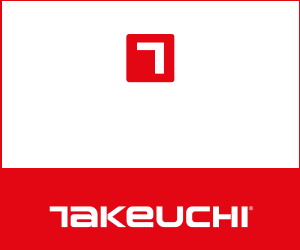Maintaining the external fabric of an old building generally involves repairs to the masonry, roof and openings. In most cases, this will mean routinely repointing the brickwork, re-slating the roof and painting the window frames. Actually cleaning the façade and removing years of built-up grime is done on a far less frequent basis – and with good reason.
Cleaning the Portland stone façade of a large landmark building traditionally requires an extensive scaffold to provide full access so that a combination of steam, water and chemical cleaning products can be applied. It’s slow, it’s messy, it’s expensive and it’s highly intrusive for the users of the building.
There is one technique, however, that avoids all this hassle and gets the job done in no time at all. It’s called ‘façade gommage’ and there’s only one company in the UK that offers it.
Thomann-Hanry, headquartered in Park Royal, north London, is the UK representative of the eponymous Paris-based contractor that developed the façade gommage method during the 1980s.
Managing director Mark Styles was running his own small building company when he first encountered façade gommage about 15 years ago.
“I was a general builder, doing mainly residential and commercial projects in London when by chance I met someone who’d been working out in France and had seen this technique being used,” explains Styles.
His contact described a technique that required no scaffolding, created no mess and was incredibly quick. Styles immediately realised that such a system could prove very popular among the owners of the many Portland stone-clad buildings in London’s West End. So he contacted Thomann-Hanry in Paris and paid them a visit.
A relatively small and highly-specialised company, founded in 1945, Thomann-Hanry is family-owned and had no ambitions for international growth. But Styles persuaded the firm to license its technique to him so that he could set up what is essentially a franchise based in London.
“I started the business in 2005 but it was 2008 before I got my first project,” says Styles. The job was to clean the façade of the Grange Hotel in Holborn – a relatively small job, but a foot in the door. It was followed shortly afterwards by a contract to clean the façade of Marks & Spencer’s Oxford Street store.
It was this job that really got the ball rolling, says Styles. “M&S didn’t want scaffolding all over their building, covering up their window displays and obstructing the pavement,” he says. “That store does £1m-worth of business every day and they couldn’t risk disrupting it.”
Retail has proved to be a major client sector for Thomann-Hanry. “For them, the main concern is loss of trade,” says Styles. Traditional cleaning methods can mean scaffolding the façade for weeks or even months; it’s unsightly, disruptive and a deterrent for potential shoppers.
Façade gommage offers a much quicker alternative. Working from a lorry-mounted hydraulic boom, inert, fine powders are projected under low pressure across the surface of the building, erasing layers of accumulated dirt to reveal stonework and masonry as it first appeared.
“We use a very fine powder to rub – not blast – dirt from the surface,” says Styles. The composition of the powder varies according to the type and texture of the substrate, but the main component is aluminium silicate – very similar in texture and chemistry to magnesium silicate, or talc.
The enclosed cabin from which the Thomann-Hanry operatives work is designed to prevent the powder residue from escaping into the environment. “The equipment should recover 100% of the material,” explains Styles. The cabin contains a powerful extraction unit that captures the dust, passes it through a wet mesh and turns it into a slurry. This is then de-watered and can be recycled and mixed with Type 1 aggregate for use as fill.
Because façade gommage is gentle and non-abrasive, the process is ideally suited to historic buildings. Among the UK landmarks that have received the Thomann-Hanry treatment are the Bank of England, the Ritz hotel and King’s College, Cambridge.
Over the past couple of years, Thomann-Hanry has been active in London’s Regent Street, first sprucing up Roxburghe House, a major retail property owned by the Crown Estate, followed by two more Crown Estate properties: Alitalia House, on the south west corner of Oxford Circus, and Hamley’s, the world-famous toy shop.
Alitalia House is soon to become Microsoft’s flagship London store. Along with other works, including stone restoration, asphalting of balconies and slating, Thomann-Hanry was commissioned by the Crown Estate to clean the Grade II listed building’s frontage, comprising 4,000m2 of Portland stone.

Designed by William Tanner almost a century ago, the building’s elevations feature ornate Beaux Arts details which the gentle action of the façade gommage process was able to scour without damaging the fragile masonry. The work was carried out at night to avoid interactions with shoppers and minimise disruption to traffic, and it was completed in 12 night-time visits.
The 600m2 frontage of Hamleys, built in 1881, was cleaned in just two nights. Over the following four weeks, the company also completed other refurbishment works, from stone and window restoration to replacement of lead dormers and slating.
Doing away with the scaffolding is probably the main selling-point of façade gommage, says Styles. “A lot of clients don’t want their building scaffolded, either because it hides the building, doesn’t look good or for security reasons. Banks don’t really want scaffolding all over their buildings,” he explains.
The speed and efficiency of the façade gommage process is the other big plus for clients. Thomann-Hanry arrives at night, or at weekends, and after each visit, the only sign that it’s been there is that another part of the building looks cleaner.

According to Styles, “there’s nothing remotely similar” on the UK market to compete with Thomann-Hanry. That’s partly due to the patent protection, but the main barrier to entry is cost. “The equipment is massively expensive,” he says.
Thomann-Hanry operates a fleet of machines, mainly comprising access platforms and compressors, but the most important machine is the façade gommage ‘crane’ itself. This is a custom-built boom-lift carrying the working platform or cabin and supplying the powder matrix and the extraction system.
“It’s based on a Terex crane chassis, but it’s so heavily modified that you probably wouldn’t recognise it,” says Styles. “There are only nine of these machines in existence and we have two of them – though we have had as many as four at work at once”.
Each machine costs £10m, and they are expensive to maintain, explains Styles. “A lot of the parts are bespoke and must be made to order…a new bumper cost us £50,000,” he adds. “Our overheads are massive.”
The façade gommage process is – not surprisingly – expensive compared with traditional cleaning carried out from a scaffold. But Styles stresses that the relative speed, convenience and environmental benefits make façade gommage not only competitive but also highly desirable from the client’s point of view. He also admits that many of his clients have deep pockets.
When Styles began marketing the façade gommage method the focus was purely on cleaning – he was not proposing to carry out repairs or restoration work. That soon changed, though:
“We didn’t originally plan to offer a full restoration service, but it was more or less forced upon us. We’d speak to a potential client about cleaning their façade and they’d say ‘what’s the point of paying you to clean the façade when we’re going to have to put scaffolding up to do the repairs anyway?’” explains Styles.
Thomann-Hanry therefore now offers a full restoration service, with cleaning being the main element. Once the cleaning has been done, the company carries out a full inspection and prepares a detailed report of all the defects that need repair. It’s then up to the client to decide whether or not to proceed. If repairs are carried out, Thomann-Hanry employs its own team of stonemasons, painters and leadwork specialists who can tackle most jobs.
Styles says that, at present, there’s enough work in London to keep the company busy, although he has made the occasional foray outside the capital – notably to work on King’s College, Cambridge. “We have an incredibly strong presence in London – most people know about us,” says Styles.
“It’s a bit different outside London; it’s a matter of getting the word out,” he adds. “But we recently did a series of CPD presentations in the north of England and completed a three-day tour of Liverpool, Manchester and Birmingham, so we’re getting out there.”
This article was first published in the June 2019 issue of The Construction Index magazine
UK readers can have their own copy of the magazine, in real paper, posted through their letterbox each month by taking out an annual subscription for just £50 a year. Click for details.
Got a story? Email news@theconstructionindex.co.uk






